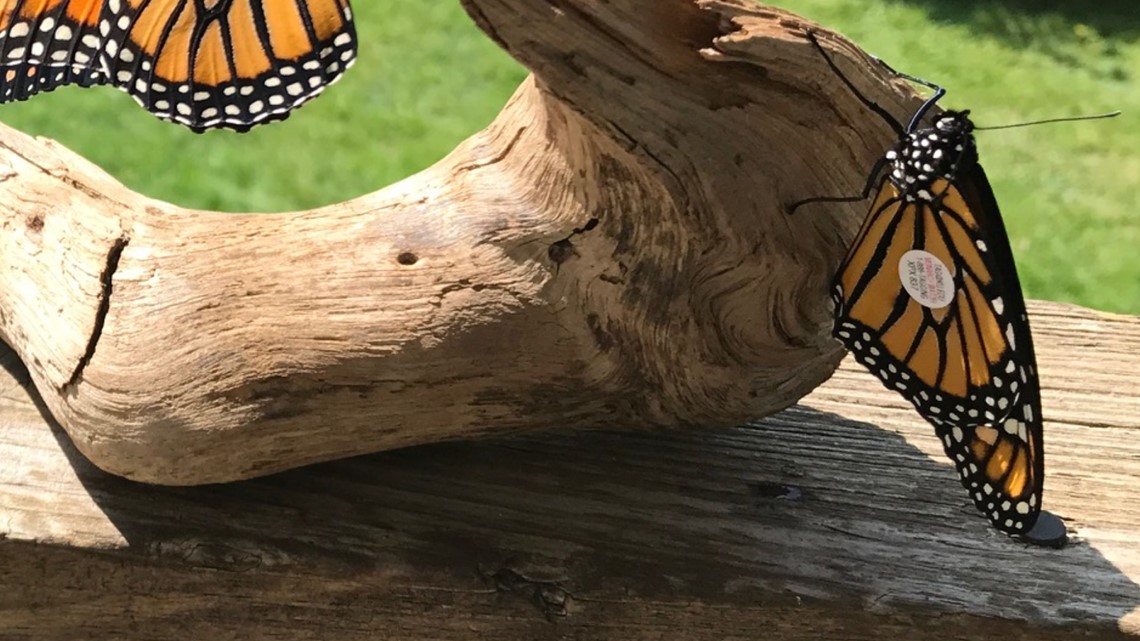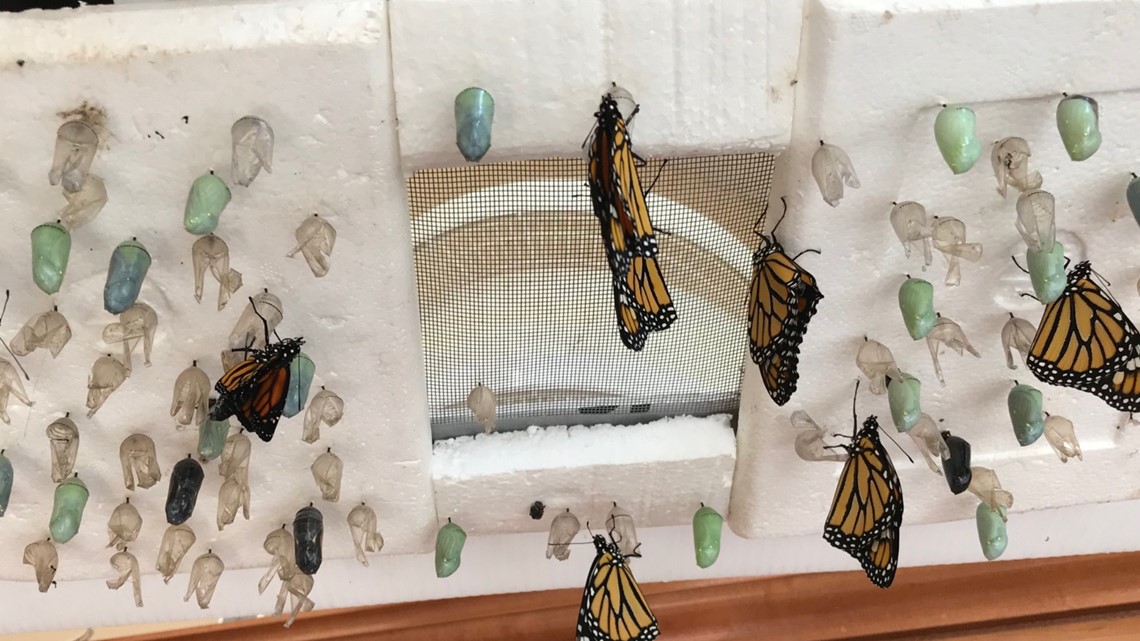BIDDEFORD, Maine —
An up-close view of a caterpillar as it matures into a butterfly is a rare and special sight, and with milkweed and monarch caterpillars in abundance this summer, that is exactly what many Maine families are getting.
UNE Environmental Studies Professor Thomas Klak says Mainers are seeing more monarchs this year than they have seen in a long time. It's good news, but he says we shouldn't be fooled.
The monarch population fluctuates from year to year, and Klak says the monarchs' overall numbers have been declining. The U.S. Fish and Wildlife Service says a billion monarch butterflies have vanished in the last 20 years.
But is there any impact on monarch butterflies that are raised in homes?
Professor Klak raises his own monarchs in his kitchen and showed NEWS CENTER Maine some chrysalises dangling from the lid of a small plastic container punctured with air holes.
"This is the stage between the caterpillar and butterfly...The monarch will be in this particular stage of its metamorphosis for a week," Klak explains.
The average female monarch lays around 200 eggs but only one of them will get its wings. Klak says, when people bring either an egg or caterpillar inside, they vastly increase the likelihood that it will make it to adulthood.
"So you're helping the monarch," says Klak.
The time when they are born affects the life of a monarch. If the are born in June, July or August, a monarch will usually live for a few weeks. But if they are born at the end of August or September, they will be part of five generations that migrate to central Mexico and back to Maine again, living until spring.
Klak says a very recent study of a small sample of monarchs indicates that raising monarchs in your home may be impacting their ability to migrate. The monarchs sampled in the study suggested that those raised in captivity didn't orient as well while migrating.
However, Klak is not convinced it is a reason to stop helping the insects which are great pollinators and important parts of the ecosystem. He says there are other long-term studies to consider like that of the University of Kansas' Monarch Watch which provides tags to interested people, so they can track the migration patterns of monarchs. Klak himself has tracked monarchs to Mexico that were raised in his Maine kitchen.
"The fact that tagged monarchs from all over the U.S. end up being found in Mexico is counter-evidence to this other study," says Klak.


One thing that is clear, monarchs need milkweed to survive. UNE's Biddeford campus has a dedicated monarch garden teaming with the vegetation. Klak's students, Tyler Riendeau and Paige Dugan, search the leaves for life.
"You’re watching biology and life at its finest,” says Riendeau.
The students agree raising monarchs is a great way to get kids away from screens and learning something amazing.
"[It] teaches them a sense of understanding of the environment and it also teaches them a little bit about responsibility," says Dungan who raises at least 15 monarchs a summer with her younger siblings.
It's good news for the monarch population and good news for Maine families who are finding caterpillars and eggs with ease and getting an up-close and personal view of nature at its finest.



